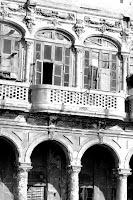 I looked around the lavish setting with big-eyed awe as the barman poured made our cocktails – clear, toffee-colored Manhattans. We had really struggled to find the place. The kind cab driver switched off the meter as he drove us up and down the road until we all simultaneously realized that the unmarked door guarded by heavies was in fact the very place we had been looking for – New York’s iconic Monkey Bar.
I looked around the lavish setting with big-eyed awe as the barman poured made our cocktails – clear, toffee-colored Manhattans. We had really struggled to find the place. The kind cab driver switched off the meter as he drove us up and down the road until we all simultaneously realized that the unmarked door guarded by heavies was in fact the very place we had been looking for – New York’s iconic Monkey Bar.Frequented in the forties by the best in business, music and film, falling in and out of disrepair during the following decades and most recently highlighted as the glamorous venue for a date between Carrie and Big in Season Four of Sex and the City; the Monkey Bar has a history to be proud of. This I was well aware of on my maiden trip to New York – a city symbolized by the Empire State Building, Statue of Liberty, Central Park and other impressive landmarks. So trust me to feel like I’ve truly arrived in the city of my dreams only when I’ve had a cocktail in a bar so symbolic of the location. A tad unfortunately, it was too late for there to be many other people around and although we had a good peek, the adjoining restaurant was closed. This all much to my indignation – the city is not supposed to sleep. Ever!
 The romance and elegance of a by-gone era is immortalized by jungle jazz murals on the walls, pre-World War II fittings, voluptuous red booths and courtly tuxedoed waiters standing attentively behind the impressive wooden bar. It is a place in which one feels cushioned from the outside world – as if nothing bad could happen and that life really was all about designer ball gowns and sparkly things – and really, why not bring white gloves back?
The romance and elegance of a by-gone era is immortalized by jungle jazz murals on the walls, pre-World War II fittings, voluptuous red booths and courtly tuxedoed waiters standing attentively behind the impressive wooden bar. It is a place in which one feels cushioned from the outside world – as if nothing bad could happen and that life really was all about designer ball gowns and sparkly things – and really, why not bring white gloves back?I have only been to the Monkey Bar once, but I know that I will revisit whenever I return to New York. I will most likely never be a regular in the true, neighborhood sense of the word, yet my visits will be as regular as I can make them. In such a modern, exciting city it is a place that links the present with a more glamorous (and suggestively sordid) time; proof that true style and elegance has never been out of fashion and a testament to the staying power of the art of beautiful cocktails.






























